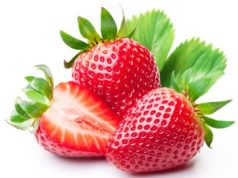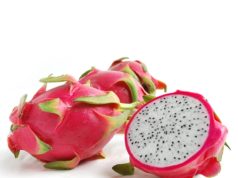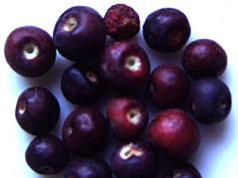Nursery management is the backbone of fruit industry. It provides continuous supply of healthy and certified planting material. So, one should give utmost attention while raising fruit plants.
In this post we will discuss ” How to setup Fruit Tree Nursery “ The important steps taken in the multiplication of quality planting materials are as under:
Seed extraction
In fruit tree nursery, most of the fruit species are propagated through vegetative methods but some fruits like jamun and phalsa are still propagated by seeds.
Besides this, seed is also the main source for raising rootstock on which the plants are budded or grafted.
The rootstock has a profound effect on the vigour, precocity, fruit yield and quality and longevity of scion, so proper care should be taken in selection of seed source. An ideal rootstock should have the following characteristics:-
- Easy to propagate by seeds or by cuttings.
- High degree of polyembryony in some fruits like citrus, mango etc.
- Compatible with scion cultivar.
- Dwarf, precocious with high yielding impact on scion.
- Vigorous in early age with well anchored roots and free from suckering.
- Adaptable to problematic soils (moist, drought, saline, calcareous etc.)
- Adaptable to unfavourable weather conditions.
- Resistant to pests and diseases.
The seed should always be extracted from fully ripened fruits collected from healthy, vigorous and high yielding trees.
Handling of seeds
After extraction, the seeds should be washed properly with water and dried in shade. The seeds of sub-tropical fruits should preferably be sown immediately after drying.
Seeds can also be stored in cool and dry places in air tight containers for certain duration as given in Table 1.
[indeed-social-locker sm_list=’fb,tw,li,go1′ sm_template=’ism_template_1′ sm_list_align=’horizontal’ sm_display_counts=’false’ sm_display_full_name=’true’ locker_template=2 sm_d_text='<h2>This premium content is locked</h2><p>Share This Page To Unlock The Content!</p>’ ism_overlock=’default’ ]
Table 1. The storage longevity of fruit seeds
Fruit Longevity (Years)
Almond 5
Apple 2-3
Apricot 5
Cherry 1-3
Citrus Immediate sowing is best
Mango 30 days
Peach 5
Pear 3
Pecan 1-3
Plum 4-6
Walnut 1-3
Pre-sowing treatment
The seeds which are having very hard seed coat require scarification prior to sowing which can be done by breaking, scratching, altering or softening the seed coverings.
The seeds of ber, peach and walnut can be scarified by cracking of seeds with hammer. The scarification can also be done by giving hot water treatment (770-1000C) for few seconds followed by cold water treatment for 12-24 hours.
The scarification of guava seed can also be done by giving 0.25% HNO3 treatment for 3 minutes.
The use of concentrated H2SO4 for 5-10 minutes and 500 ppm GA3 for over night as seed treatment is very useful to enhance the seed germination of ber and aonla, respectively. The seed should be thoroughly washed after acid treatment.
Prior to sowing, seeds of temperate fruits need some period of rest under moist chilling conditions for germination as given in Table 2.
Table 2. Duration of seed stratification (at 1-50C) in moist sand medium
Fruit Stratification duration
Apple 50-70 days
Pear 40-50 days (30-35 days for P.pashia)
Peach 60-70 days
Plum 60-70 days
Apricot 45-50 days
Almond 45-50 days
Walnut 95-120 days
Pecan 70-75 days
Persimmon 90-100 days
The seed germination can be improved by treating the seeds with 5000 ppm thiourea for 15-20 hrs (peach and grapes), 100 to 500 ppm GA3 for 12 hrs (for apple, cherry, peach and hazelnut), 5000 ppm ethrel (for guava) and 10-20 ppm benzyladenine (for apple).
When controlled temperature conditions for stratification are not available, sowing of seed is done directly in nursery in the month of November-December in cool areas.
Preparation of seed bed / container
The growing media to be used must be sufficiently firm to provide anchorage to seeds or cuttings, well decomposed with high C:N ratio, free from weeds and harmful pathogens, cheaper and readily available and should have slightly acidic pH and good water holding capacity with sufficient porosity to drain excess water.
For raising seedlings, the bed of 2-3 m (L) x 60-100 cm (W) x 15-20 cm (H) should be prepared by mixing 2 parts loamy soil + 3 parts leaf mould + 5 parts sand.
This soil media must be sterilized either by covering with white plastic polyethylene sheet for 4-6 weeks during the hottest part of the year or with 2% formalin solution / basamid fungicide (300 g / cubic meter of media).
This media should be mixed with 2.5 kg of base fertilizer mixture of (1.8 kg CAN or Ammonium sulphate + 2.5 kg Super phosphate + 1.0 kg Muriate of potash) per cubic meter of root media.
This media with the base fertilizer can also be filled in the containers, earthen pots, polyethylene bags etc. for raising seedlings. The seeds of deep-rooted fruits (ber, jackfruit, walnut etc.) can be sown directly in the pit called in situ planting.
Seed sowing
The seeds of sub-tropical fruits should be sown immediately after extraction from the fruit, while the seeds of temperate fruits should be sown after their stratification.
Since, the citrus seeds are available in winter month, the protection with alkathene tent is essential for increasing germination and the proper growth of seedlings.
The seeds should be sown at proper distance and the depth of the seeding is kept 3 times the thickness of seed. The seeding distance of some fruit species is given in Table 3.
Table 3. Seeding distance of some fruit crops
Fruit Distance
Citrus and guava 10 cm x 2 cm
Mango 45 cm x 15-20 cm
Jamun 25-30 cm x 15 cm
Apple, pear, peach, plum 30 cm x 10-15 cm
Phalsa 10-15 cm x 15 cm
Ber 30 cm x 15 cm
The germination period of seeds varies with the crop and is given in Table 4.
Table 4. Seed germination period after sowing
Fruit Germination period (in days)
Apple 75-100*
Apricot 20-25*
Citrus 21
Guava 25-30
Ber 40-50
Mango 25-30
Peach 45*
Pear 45*
Plum 30*
Cherry 20*
Walnut 30*
* After stratification
After care of seedlings
After sowing, the bed should be covered with thin layer of pulverized soil or some other materials like wood ash plus well rotten farmyard manure.
If there is a need of irrigation, water should be given with very fine nozzle.
The frequency of irrigation in seedbed depends upon the weather and soil conditions. Hand weeding should be done to check the population of weeds.
The nursery bed should be protected from summer heat by thatching with paddy straw and sugarcane leaves, sowing of arhar around the bed, irrigation etc. and winter killings by thatching, irrigation, smoking, polyethylene tents etc.
In areas, where rapid death and collapse of seedlings occur in nursery, drenching of nursery beds with carbendazim (100 g) + mancozeb (250 g) per 100 ml of water should be done.
Transplanting
After attaining the age of transplanting (Table 5), the seedlings should be transplanted in properly leveled and well-irrigated and drained beds which have been liberally supplied with well rotten FYM/organic manures.
The seedlings should be planted in twin rows at 30 cm x 15 cm distance. The distance between twin rows should be kept 50-60 cm for performing other nursery operations.
Table 5. Transplanting age of seedlings
Fruit Age
Mango 2-3 weeks
Jackfruit 1-2 years
Bael 1 year
Ber 2 months
Phalsa 8-10 months
Jamun 10 months
Citrus 4-5 months
Guava 4 months
Loquat 4-5 months
Temperate fruits 8-10 months
Proper care (irrigation, weeding, nutrition, plant protection measures etc.) of these seedlings should be taken in transplanting bed.
Selection of mother plants
The trees selected for mother plants should have the following characteristics
- Tree should be true-to-type.
- Consistently high performance and maximum yield over 3-5 years with good quality fruit.
- Plant should have attained full bearing age.
- Free from pests and diseases.
- Preparation of rootstock
Select healthy seedlings for budding/grafting which have attained the pencil diameter. Remove thorns/leaves from the rootstock at budding/grafting height. The budded or grafting operations should be performed at a height of 20 cm from ground level.
Preparation of scion
Select round wood scion, and it should be prepared according to the method of budding/grafting to be performed as mentioned for every fruit crop in this package of practices.
After care of grafted/budded plants
Proper care should be taken of these plants. Do not allow any sucker to grow from the rootstock below budding/grafting union.
Use of root trainers
The ideal budded or grafted plant should have strong uncoiled tap root system with sufficient lateral roots. In containers or under sized polybags, if the plant is kept for longer time, the taproot is coiled up and plant show poor performance after planting out.
In order to overcome these problems, root trainers can be used which facilitate strong fibres root system in plants.
[/indeed-social-locker]
Hope you enjoyed our article on How to setup Fruit Tree Nursery. Spread the love, hit the share button and do help your friends find this content!








